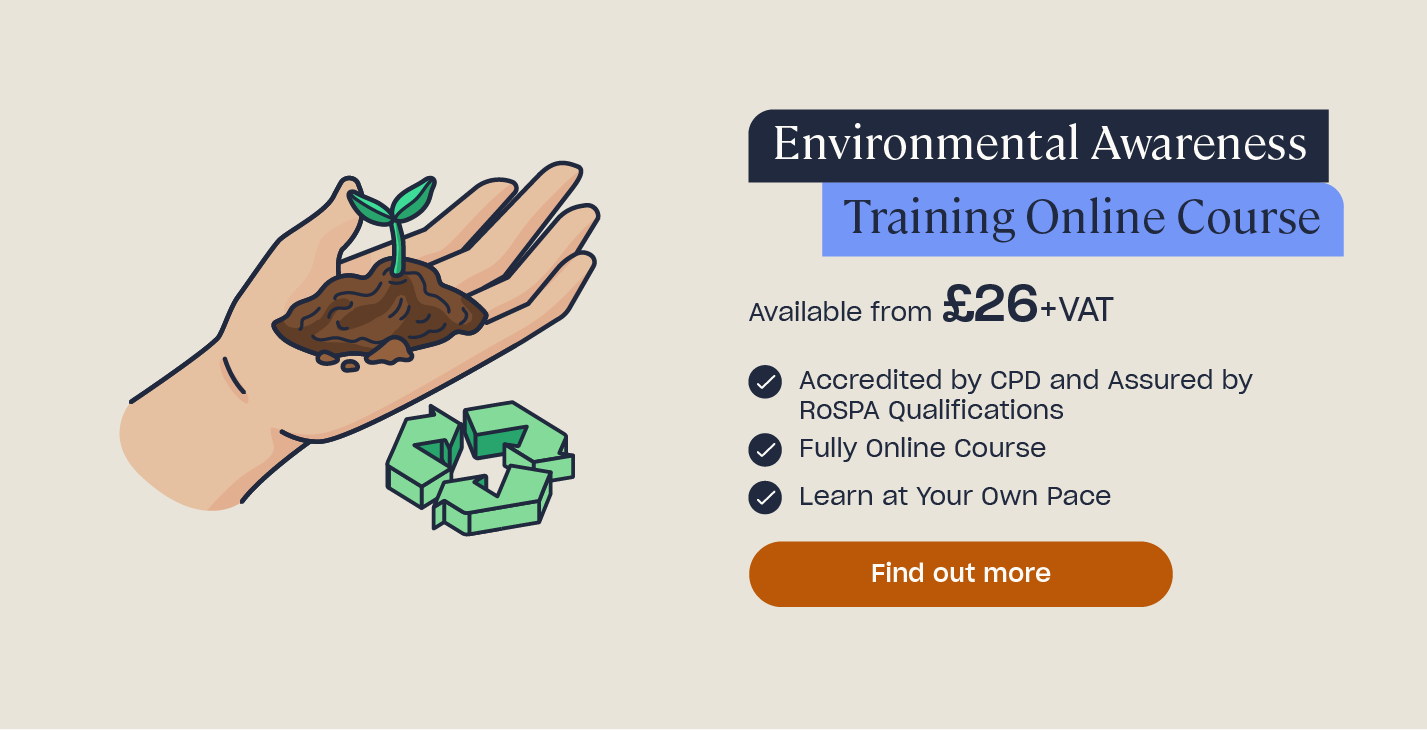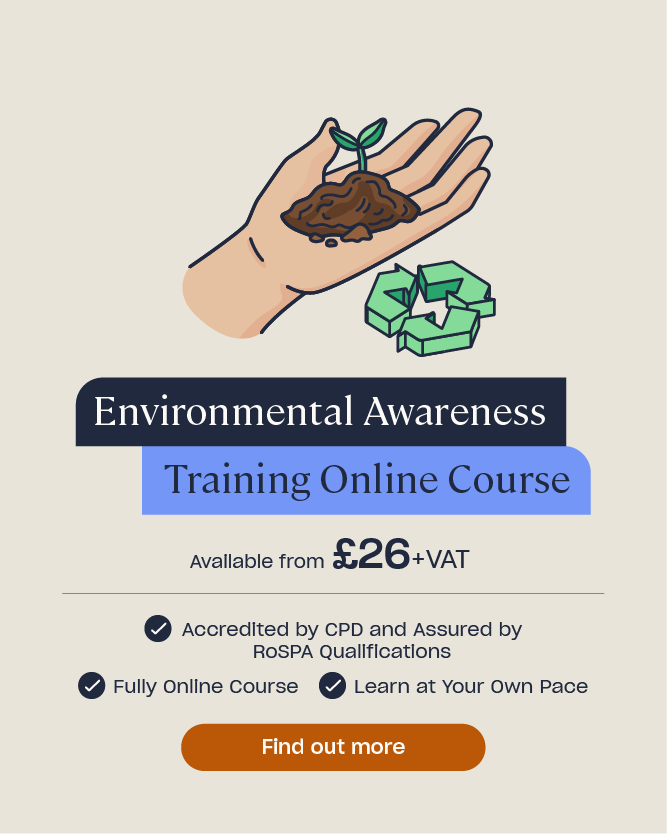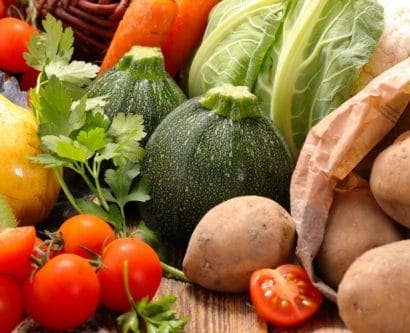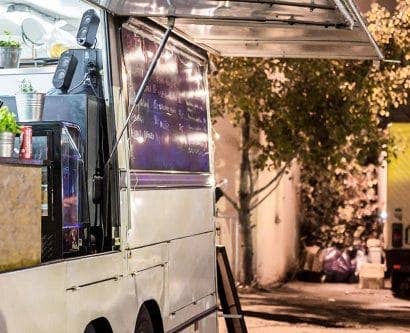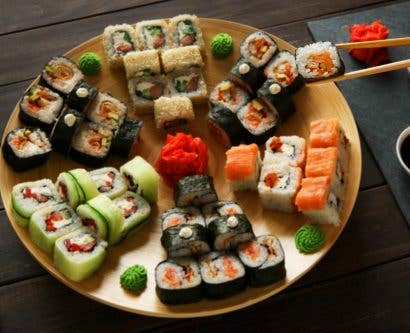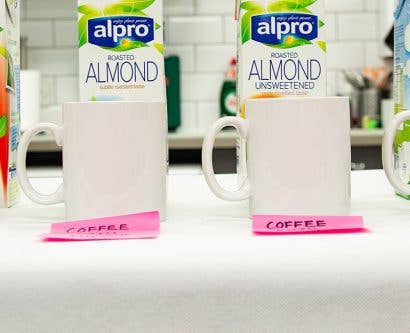How to Reduce Waste at Christmas
Christmas is a time of decadence and extravagance. As we celebrate the season with friends and family, we enjoy tasty festive treats, seasonal delights (eating Ferrero Rocher at any other time of the year is simply incorrect) and spend excessively on gifts, cards and presents galore. Whilst it is an undeniable time of joy and wonder, it can also be a time of overindulgence and increased waste.
Christmas in the U.K. generates staggering amounts of waste with approximately 270,000 tonnes of food being thrown away each year despite being totally edible. But it’s not just the sprouts that are ending up in landfills. Approximately 108 million rolls of wrapping paper are binned each Christmas; that’s around 227,000 miles of paper, almost enough for a quick trip to the moon!
It’s not all doom and gloom though! By making a few small changes, it’s perfectly possible to enjoy the festive fun whilst making greener choices and reducing your waste. In this article we will provide some tips on how you can reduce waste and have a more sustainable Christmas.
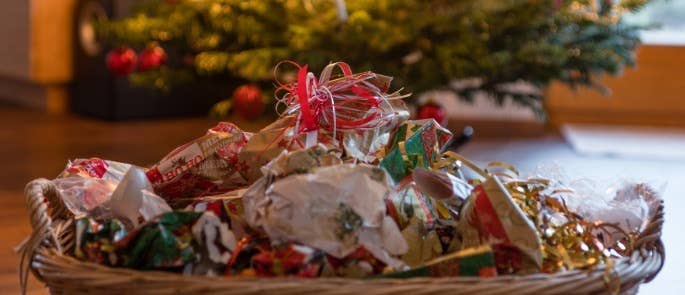
Reducing Food Waste at Christmas
According to climate campaign group WRAP, enough potatoes are thrown away each year to make roasties for Christmas Day for the whole country for 48 years. That’s more than just a few bags of Aunt Bessie’s! It is estimated that we generate around 30% more waste at Christmas than we do the rest of the year. This includes two million turkeys, 74 million mince pies and 17 million Brussels sprouts that end up in the bin every year.
Not only is this waste a huge problem for landfill sites and our wallets, the production and packing of these items produces vast amounts of carbon emissions and greenhouse gases, as well as creating tonnes of packaging rubbish which also ends up in landfills. This time of year is riddled with sales promotions intended to encourage you to purchase every Christmas treat you could possibly imagine. This often leads to overspending and many people admit to buying more than they need at this time of year, for fear of running out. However, this inevitably leads to an increase in food waste as we buy more food than we could possibly eat and end up stuck with leftovers we don’t know what to do with.
5 Ways to Reduce Food Waste at Christmas
- Buy with your eyes, not your stomach. Only buy what you need and will actually eat. Brussel sprouts might be synonymous with the season but if no one in your household actually likes them, it doesn’t matter how delicious Jamie Oliver says he can make them, they’ll go to waste. One in seven consumers admit to buying more food than they need so just like Santa, make a list and check it twice! Writing a list when food shopping can help prevent impulse buying those little bits that you don’t need and won’t use.
- Make your freezer your friend. Portion out leftovers and pop them in the freezer for easy, low stress ‘twixmas’ meals. You can also make and freeze sides and sauces ahead of time to avoid last minute panic buying the week of Christmas. Remember, before you make your freezer your friend you need to make sure you have enough space. Take the time to reorganise your freezer so that you have ample space for leftovers if necessary.
- Sharing is caring. Whether you are hosting for the first time, or heading back home, Christmas dinner is often a time when family and friends come together for a hearty meal. Consider dividing responsibility for the meal and have each person contribute a dish. Not only will this alleviate pressure for the host, it will prevent one person from over estimating and buying too much food.
- Shop local, shop loose. Food waste isn’t just about the food itself; packaging is also a major culprit. When food shopping, aim to buy produce from local suppliers as they tend to use less packaging than supermarkets and the food will not have travelled as far, reducing its carbon impact. Plastic packaging accounts for nearly 70% of the plastic waste generated in the U.K. so where possible buy your fruit and vegetables loose.
- Dish it out yourself. The sight of a Christmas plate piled high with all the trimmings might be just the thing to get your mouth watering, but that might not be the case for everyone. Encourage guests to serve themselves, where appropriate, to avoid giving people more food than they can stomach. This also ensures that any leftover food is more likely to be in an edible and easily freezable condition.
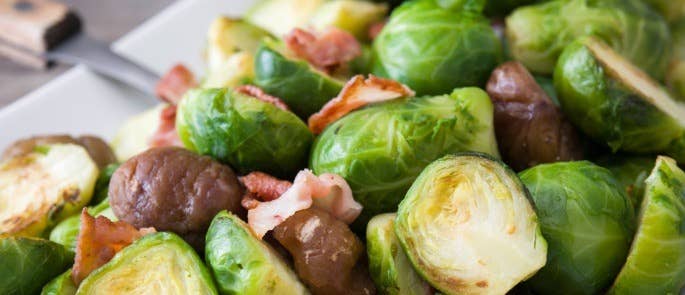
Reducing Paper Waste at Christmas
Though we might all be guilty of immediately tearing them open in a frantic rush to see what we got, nicely wrapped gifts adorned with ribbons and bows are a notable part of the ceremony of gift giving. However, the glitter and plastic used to make our presents presentable are the very things that render most wrapping paper unrecyclable. The average U.K. household uses four rolls of wrapping paper to wrap their presents and it’s estimated that around 50,000 trees are chopped down each year to meet these demands. And it’s not just the wrapping paper! Around 8 billion Christmas cards are sent each year with an eye watering 30,000 tonnes worth of them being thrown away; that equates to around £2.8 million worth of rubbish.
5 Ways to Reduce Paper Waste at Christmas
- Use recycled and/or recyclable paper. Those presents bejeweled with glitter snowflakes might look wonderful under your tree, but they are a lot less appealing in a landfill, so instead opt for recycled or recyclable wrapping paper. Lean into the nostalgic feeling of the period with brown wrapping paper or get creative and wrap your presents in old newspapers or magazines. It’s worth noting that the term ‘biodegradable’ is often misused and applied to a broad range of different materials as technically most things will biodegrade eventually. However, without a specified environment or time frame, the term is vague and doesn’t address the fact that some products are still harmful to the environment after they biodegrade, such as plastics that become microplastics and impact ecosystems. Be mindful when choosing wrapping paper that claims to be biodegradable as it might unfortunately be an attempt at greenwashing. When it comes to recycling your paper, a simple way to check if it can be recycled is the scrunch test; scrunch the paper in your hands, if it stays in a ball it can go in your recycling bin, if not it needs to go in the rubbish bin.
- Try something new. Wrapping paper isn’t the only way to sprinkle some seasonal joy onto your presents. Furoshiki are Japanese wrapping cloths traditionally used to wrap and transport gifts. This is something that you can easily replicate with some spare material or that old (clean) pillow case you’ve always loved the pattern of. Gift bags are also a great way to ‘wrap up’ a present and they are much easier to reuse time and time again.
- Upcycle. Before you go to throw away yet another Christmas card from yet another distant acquaintance, stop and upcycle it instead. Get crafty and turn your Christmas cards into gift tags or part of your home decorations.
- Send e-cards instead of paper ones. If you still want to send cards, opt for e-cards instead. E-cards generally have a lower environmental impact as their production requires less energy, they don’t need to be physically transported and no trees are cut down to produce them. That being said, email of any kind does produce carbon emissions so be mindful of the size of the e-card you send as those with large images, animations or videos require more power to send them.
- Send it again! A great way to highlight the sentiment of the season is to send the same card. Start a new tradition and send a card that the recipient will send back to you the next year with a new additional message. Keep doing this till there is no space left in the card and you will be left with a wonderful reminder of Christmases gone by with those near and dear to you.
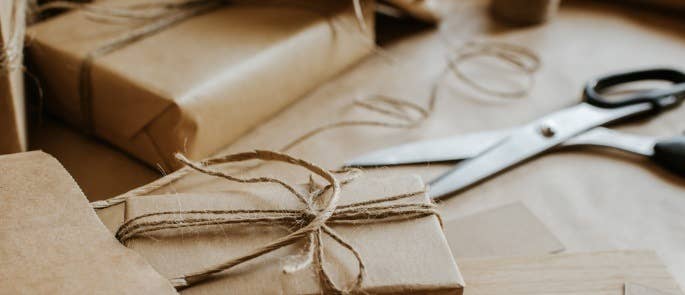
5 Ways to Have a Sustainable Christmas
By making small changes to your festive habits you can reduce waste and have a more sustainable Christmas. These changes don’t need to be big nor do they need to be expensive; they simply require a little bit more time and input. Instead of viewing these changes as an inconvenient chore, turn them into a part of your seasonal celebrations. Invite friends and family round to make decorations together, set up a group chat where people can share unused items for regifting, involve everyone in your efforts to have a more sustainable season.
Here are 5 ways you can have a more sustainable Christmas:
- Keep it real. Real Christmas trees are generally better for the planet and have a much lower carbon footprint than artificial ones. That being said, Forestry England estimates that around 8 millions trees end up in landfills each year with an eyewatering cost to the taxpayer of around £22 million. Real trees will biodegrade naturally and there are lots of different ways to recycle your tree once it has come to the end of its life. Many councils have recycling services for trees so look to see what options your local authority offers. Alternatively, you could consider renting a tree that can be returned after the festive season or buying a potted one that can be used again and again and replanted in your garden. If you decide to get a real tree, read our article on Christmas Tree Safety for tips on how to ensure your sustainable choice stays the safe choice this Christmas.
- Do it yourself. Handmade, natural decorations can look just as good as shop bought ones and making them can be a great activity that involves the whole family. See what you have in your garden already and use materials such as fresh holly, pinecones and mistletoe to bring some festive cheer into your home. Dried orange slices are also easy to make and wonderfully versatile decorations that you can use for presents and garlands alike. The bonus of handmade and natural decorations is that when you are done with them, they can go back into the garden or be composted or recycled.
- Less is more. A survey by Founder found that approximately 31 million people have been given at least one Christmas gift that they didn’t like. The total estimated spend on these unwanted gifts works out as a staggering £1.27 billion. Instead of heading straight for the high street and buying 13 different body wash gift sets, think about if you have items that you don’t want that you could regift to someone else. This is also the perfect time to check out your local charity shops. Many people have big clear outs at this time of year and you can easily find items that are looking for a new home. Remember, gifts don’t have to be physical items; give the gift of time spent doing activities and making magical memories with vouchers for different experiences.
- Ditch the Christmas cracker. A study of 1100 U.K. households by Business Waste, found that 99% of individuals almost immediately throw their Christmas cracker gift away. Though a welcome sight at the Christmas table, it’s estimated that around 40 million crackers are thrown away across the country on Christmas day alone. Christmas crackers often include single-use plastic items that are immediately thrown away resulting in massive amounts of waste. Since 2020, John Lewis and Waitrose have stopped selling Christmas crackers containing plastic toys and puzzles. Follow their lead and opt for sustainable or reusable crackers, make your own or scrap them all together and get everyone to share their ‘best’ Christmas joke instead!
- Make and bake. Don’t underestimate the significance and sentimental value of a handmade gift. Homemade gifts are unique and personal and the care you put into making them reflects the love you have for the recipient. Dust off an old hobby and knit a scarf or bake a cake to be served with delicious homemade jams and preserves.

By making sustainable choices and reducing our environmental impact, we can ensure that Christmas stays the most wonderful time of the year rather than the most wasteful time of the year. Small tweaks can make a world of difference, saving both the planet and your pocket and bringing the spirit of sustainability to your festivities.
Further Resources:
- Planning a Christmas Dinner: Free Checklist
- How to Manage Your Mental Health at Christmas
- Environmental Awareness Training Online Course


